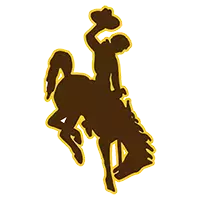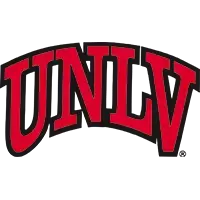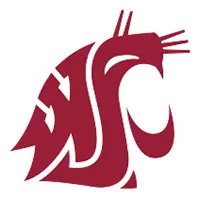Colorado State University Athletics

Memorable Moments: The Next Move
8/28/2025 2:00:00 PM | Football
Colorado State’s conference moves since 1893
The 2025 football season is here and as Colorado State looks to finish its last season in the Mountain West, this will be the fifth time CSU has changed conference affiliations. The move to the Pac-12 will be the sixth conference CSU football has competed in since the 1893 football season. Here is a look back at the first and last seasons in each of the previous five conferences – and the dark days without a conference, too.
Football at CSU began in January of 1893, technically the 1892 football season, and in that haphazard season Colorado Agricultural College did not have a conference to align with during its inaugural year. On March 18, 1893, CAC team captain Herm Howard and star halfback Henry Calkins met with students from other area schools to form the first intercollegiate athletic conference in the region. Named the Intercollegiate Athletic Association of Colorado (also known as the Colorado Football Association), those first member schools were CAC, Colorado, Denver, Colorado College and Colorado School of Mines.
The first official season of that conference began in the fall of 1893, where the CAC team took on CU, Mines (twice) and DU ending the season with a record of 1-3. After the 1894 season football was suspended until 1899, when CAC re-entered the ICAAC and played in this conference through the 1908 season, when the Rocky Mountain Athletic Conference was formed in January of 1909. Ironically, the 1908 season was not much better than 1893, the Aggies posted a 1-3 record, their only win was in Laramie.
In 1909, the new RMAC saw its first season with CAC, Colorado, Colorado School of Mines, and Colorado College as its inaugural members. Other schools later joined in 1910, and the conference thrived as the main athletic conference in Colorado, Wyoming and Utah for nearly 30 years. The Aggies went 1-2 in that first season in the RMAC, again beating Wyoming.
By the mid-1930s, the conference had grown too much and had divided itself into the Big 7 and Little 5 schools. With 11 colleges ranging from the largest schools in Colorado and Utah to small schools like Western State (Colorado Western University), the time to break away from the RMAC came in the fall of 1937. The Big 7, which included Colorado State, CU, DU, Wyoming, Utah, Utah State, and BYU formed the new Mountain States Athletic Conference to begin in January of 1938.
The final year in the RMAC saw a poor Aggies team finish with a 1-7 record but the conference was also the most successful in terms of football conference championships by any Aggies or Rams team. Coach Harry Hughes won eight conference championships in the RMAC and an undefeated 1915 season that many CSU fans claim as a national championship. By the 1930s, the depression and Hughes' lack of change brought about bad football in Fort Collins.
In their first season in the new Mountain States Conference (usually referred to as the Skyline Conference), the Aggies did not fair much better than 1937, ending their inaugural season with a 1-5-2 record. They would only win one Skyline Conference title, which came in 1955 under coach Bob Davis and under the play of CSU legend Gary Glick.
Times changed rapidly after WWII and so did the outlook on football at colleges across the country. In 1948, CU left the Skyline Conference for the Big 6 and other schools in the conference built up their programs with scholarships and new football stadiums. Wyoming built a new stadium in 1950 and offered 100 scholarships for football players while Colorado A&M played in the same rickety wooden stadium Hughes built in 1912 and had less than 20 scholarships.
By 1960, Colorado State was growing as President William Morgan built the school from a small college to a university. That growth did not include athletics and when Denver dropped football after the 1960 season, other schools in the conference joined together to form a new conference called the Western Athletic Conference. The only problem was that CSU, along with Utah State were told they could not join due to their deplorable athletic facilities.
The last season in the Mountain States Conference saw the Rams lose every game, the first time since 1918 CSU football lost every game. The WAC started in 1962, with CSU on the outside as an independent school. Dr. Morgan and the State Board of Agriculture used this as a wake-up call and built Moby Arena (then known as "Auditorium-Gymnasium") and Hughes Stadium to enter the WAC in 1968. While the new facilities were nice, the Rams went 2-8 and stayed at the bottom of the conference for another seven years.
Skip to the 1990s when CSU football was on top of the college football world. Coach Sonny Lubick arrived in 1993 and won WAC championships in 1994, 1995 and 1997, taking CSU to the national stage. This brought about more television revenue, bowl money and continued success in other sports too.
However, the WAC, just like the RMAC in 1937, had grown too big for the conference and the money shared by the schools was diluted. While CSU, BYU, Wyoming and Utah dominated the conference, smaller schools took their share of the revenue generated by the schools that were in the limelight. A change had to be made and CSU President Albert Yates along with presidents from the larger schools met secretly to form a new athletic conference, splitting away from the WAC.
On May 26, 1998, Dr. Yates and other member school presidents announced the formation of the Mountain West Conference, ending their affiliation with the WAC after the 1998-99 school year. In their last season of 1998, the Rams finished the season with a highly respectable 8-4 record, but no invitation to a bowl game. They had just missed their fourth WAC championship but were on to a new conference and more success.
The first season in the Mountain West saw CSU finish with an 8-3 record and a tie for the first MW championship with BYU and Utah, but thanks to the past success of the Rams, they were chosen to play in the conference's bowl game, the Liberty Bowl. The Rams went on to win two more MW championships in 2000 and 2002, giving Lubick six in total between the two conferences. While the MW was ahead of its time forming its own television network, it could not keep up with conferences like the Big 10, SEC and Pac 12.
That brings us to 2025, with the Rams playing their final season in the Mountain West and moving on to a completely reformed Pac-12 in 2026. Over the past 133 years, CSU has moved up every time it has changed athletic conferences and left the old conference either as a small conference or eliminated altogether. With the move to the Pac-12, CSU is sure to move upwards in the NCAA, thanks to a newer football stadium and commitment to building its programs to an even higher level. Let's see if the Rams can close out their affiliation with the MW by winning another conference championship, just as they kicked off the conference in 1999.
Football at CSU began in January of 1893, technically the 1892 football season, and in that haphazard season Colorado Agricultural College did not have a conference to align with during its inaugural year. On March 18, 1893, CAC team captain Herm Howard and star halfback Henry Calkins met with students from other area schools to form the first intercollegiate athletic conference in the region. Named the Intercollegiate Athletic Association of Colorado (also known as the Colorado Football Association), those first member schools were CAC, Colorado, Denver, Colorado College and Colorado School of Mines.
The first official season of that conference began in the fall of 1893, where the CAC team took on CU, Mines (twice) and DU ending the season with a record of 1-3. After the 1894 season football was suspended until 1899, when CAC re-entered the ICAAC and played in this conference through the 1908 season, when the Rocky Mountain Athletic Conference was formed in January of 1909. Ironically, the 1908 season was not much better than 1893, the Aggies posted a 1-3 record, their only win was in Laramie.
In 1909, the new RMAC saw its first season with CAC, Colorado, Colorado School of Mines, and Colorado College as its inaugural members. Other schools later joined in 1910, and the conference thrived as the main athletic conference in Colorado, Wyoming and Utah for nearly 30 years. The Aggies went 1-2 in that first season in the RMAC, again beating Wyoming.
By the mid-1930s, the conference had grown too much and had divided itself into the Big 7 and Little 5 schools. With 11 colleges ranging from the largest schools in Colorado and Utah to small schools like Western State (Colorado Western University), the time to break away from the RMAC came in the fall of 1937. The Big 7, which included Colorado State, CU, DU, Wyoming, Utah, Utah State, and BYU formed the new Mountain States Athletic Conference to begin in January of 1938.
The final year in the RMAC saw a poor Aggies team finish with a 1-7 record but the conference was also the most successful in terms of football conference championships by any Aggies or Rams team. Coach Harry Hughes won eight conference championships in the RMAC and an undefeated 1915 season that many CSU fans claim as a national championship. By the 1930s, the depression and Hughes' lack of change brought about bad football in Fort Collins.
In their first season in the new Mountain States Conference (usually referred to as the Skyline Conference), the Aggies did not fair much better than 1937, ending their inaugural season with a 1-5-2 record. They would only win one Skyline Conference title, which came in 1955 under coach Bob Davis and under the play of CSU legend Gary Glick.
Times changed rapidly after WWII and so did the outlook on football at colleges across the country. In 1948, CU left the Skyline Conference for the Big 6 and other schools in the conference built up their programs with scholarships and new football stadiums. Wyoming built a new stadium in 1950 and offered 100 scholarships for football players while Colorado A&M played in the same rickety wooden stadium Hughes built in 1912 and had less than 20 scholarships.
By 1960, Colorado State was growing as President William Morgan built the school from a small college to a university. That growth did not include athletics and when Denver dropped football after the 1960 season, other schools in the conference joined together to form a new conference called the Western Athletic Conference. The only problem was that CSU, along with Utah State were told they could not join due to their deplorable athletic facilities.
The last season in the Mountain States Conference saw the Rams lose every game, the first time since 1918 CSU football lost every game. The WAC started in 1962, with CSU on the outside as an independent school. Dr. Morgan and the State Board of Agriculture used this as a wake-up call and built Moby Arena (then known as "Auditorium-Gymnasium") and Hughes Stadium to enter the WAC in 1968. While the new facilities were nice, the Rams went 2-8 and stayed at the bottom of the conference for another seven years.
Skip to the 1990s when CSU football was on top of the college football world. Coach Sonny Lubick arrived in 1993 and won WAC championships in 1994, 1995 and 1997, taking CSU to the national stage. This brought about more television revenue, bowl money and continued success in other sports too.
However, the WAC, just like the RMAC in 1937, had grown too big for the conference and the money shared by the schools was diluted. While CSU, BYU, Wyoming and Utah dominated the conference, smaller schools took their share of the revenue generated by the schools that were in the limelight. A change had to be made and CSU President Albert Yates along with presidents from the larger schools met secretly to form a new athletic conference, splitting away from the WAC.
On May 26, 1998, Dr. Yates and other member school presidents announced the formation of the Mountain West Conference, ending their affiliation with the WAC after the 1998-99 school year. In their last season of 1998, the Rams finished the season with a highly respectable 8-4 record, but no invitation to a bowl game. They had just missed their fourth WAC championship but were on to a new conference and more success.
The first season in the Mountain West saw CSU finish with an 8-3 record and a tie for the first MW championship with BYU and Utah, but thanks to the past success of the Rams, they were chosen to play in the conference's bowl game, the Liberty Bowl. The Rams went on to win two more MW championships in 2000 and 2002, giving Lubick six in total between the two conferences. While the MW was ahead of its time forming its own television network, it could not keep up with conferences like the Big 10, SEC and Pac 12.
That brings us to 2025, with the Rams playing their final season in the Mountain West and moving on to a completely reformed Pac-12 in 2026. Over the past 133 years, CSU has moved up every time it has changed athletic conferences and left the old conference either as a small conference or eliminated altogether. With the move to the Pac-12, CSU is sure to move upwards in the NCAA, thanks to a newer football stadium and commitment to building its programs to an even higher level. Let's see if the Rams can close out their affiliation with the MW by winning another conference championship, just as they kicked off the conference in 1999.
Colorado State Football: Jay Norvell Weekly Press Conference - Week 5 (2025)
Monday, September 29
Colorado State Football: Jay Norvell Post-Game (Washington State, 2025)
Saturday, September 27
Colorado State Football: Karas (L) and Evans (R) Postgame (Washington State, 2025)
Saturday, September 27
Colorado State Football: Jay Norvell Weekly Press Conference - Week 4 (2025)
Monday, September 22










